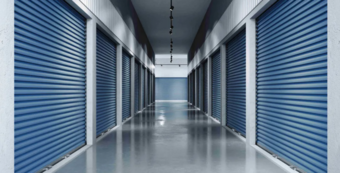Urbanization and Space Constraints
As urban areas continue to expand, living spaces are becoming more compact. Many people find themselves in need of additional storage, whether due to downsizing or relocating to more densely populated areas. Self-storage facilities provide a practical solution, offering extra space for seasonal items, furniture, or personal belongings that don’t fit in a smaller living environment. This trend is especially evident among city dwellers looking to maximize their limited space.
Convenience and Accessibility
One of the main reasons for the rise of self-storage is the convenience it offers. With locations strategically placed near residential and commercial areas, accessing stored items has never been easier. Many facilities offer 24/7 access, allowing customers to retrieve or store belongings at their convenience. This flexibility is appealing to busy individuals and growing businesses that need immediate access to inventory or equipment.
Security and Peace of Mind
Modern self-storage facilities prioritize security, providing peace of mind to customers. With features such as surveillance cameras, coded access, alarms, and controlled entry, users can trust that their belongings are safe.
A Solution for Businesses
Businesses have also embraced self-storage as a strategic move to manage inventory and supplies efficiently. Whether it’s small businesses needing storage for equipment or larger companies requiring temporary space during transitions, self-storage offers a cost-effective and flexible alternative to traditional warehousing.
The Self-Storage Market in Belgium
In Belgium, the self-storage market is dominated by four major players: Shurgard, Lock’O, Safestore, and Storo, along with several smaller local providers.
CBRE has identified more than 60 self-storage locations covering approximately 165,000 m² of warehouse space. The average self-storage warehouse is around 3,000 m², with units ranging from 1 m² to 50 m².
Rental prices vary primarily based on location and size. Typically, storage units in city locations are more expensive, and smaller units cost more per square meter than larger ones. For example, a small 2 m² storage box may cost between €400 and €600 per m² per year, whereas a larger 15 m² self-storage unit is significantly cheaper, ranging from €200 to €400 per m² per year.
Main Players in Belgium
Shurgard is the largest operator in Belgium, with 20 locations and 92,000 m² of storage, and it also has the largest self-storage facilities at 4,600 m² on average.
Lock’O has been active in the Belgian market since 2012, with 16 locations covering 40,000 m², mainly in the Walloon region.
Safestore has 4 self-storage warehouses, totaling 10,000 m².
Storo is the newest self-storage specialist in Belgium, having opened 3 locations, with 2 more scheduled for 2025.
Understanding the Costs of Operating a Self-Storage Facility
For entrepreneurs looking to capitalize on the self-storage trend, understanding the associated costs is crucial. The main expenses involved include land acquisition or warehouse rental costs, along with potential construction or renovation expenses. Land costs vary greatly depending on the location, with urban areas typically being more expensive.
In addition to construction and rental costs, self-storage operators must consider ongoing expenses such as maintenance, utilities, insurance, and marketing. Operational expenses also include staff salaries if employees are hired. Furthermore, technology investments, such as management software and online payment systems, can enhance operational efficiency but also add to the initial costs.
Innovative Services Transforming Self-Storage
As the self-storage landscape evolves, new trends are emerging that cater to modern consumer demands. One such trend is the introduction of services that enhance the overall user experience. Companies like Boxify and Box@Home are revolutionizing the traditional self-storage model by integrating transportation services into their offerings.
Boxify provides a truck service that picks up and delivers stored items within 48 hours, ensuring that customers can retrieve their belongings with minimal hassle. This on-demand access to stored goods caters to the fast-paced lifestyles of today’s consumers.
On the other hand, Box@Home offers small mobile storage containers that are delivered directly to the customer's home. This service allows individuals to load their belongings at their own pace, without the pressure of a time constraint. Once packed, the containers are picked up and transported to a larger warehouse for secure storage.


